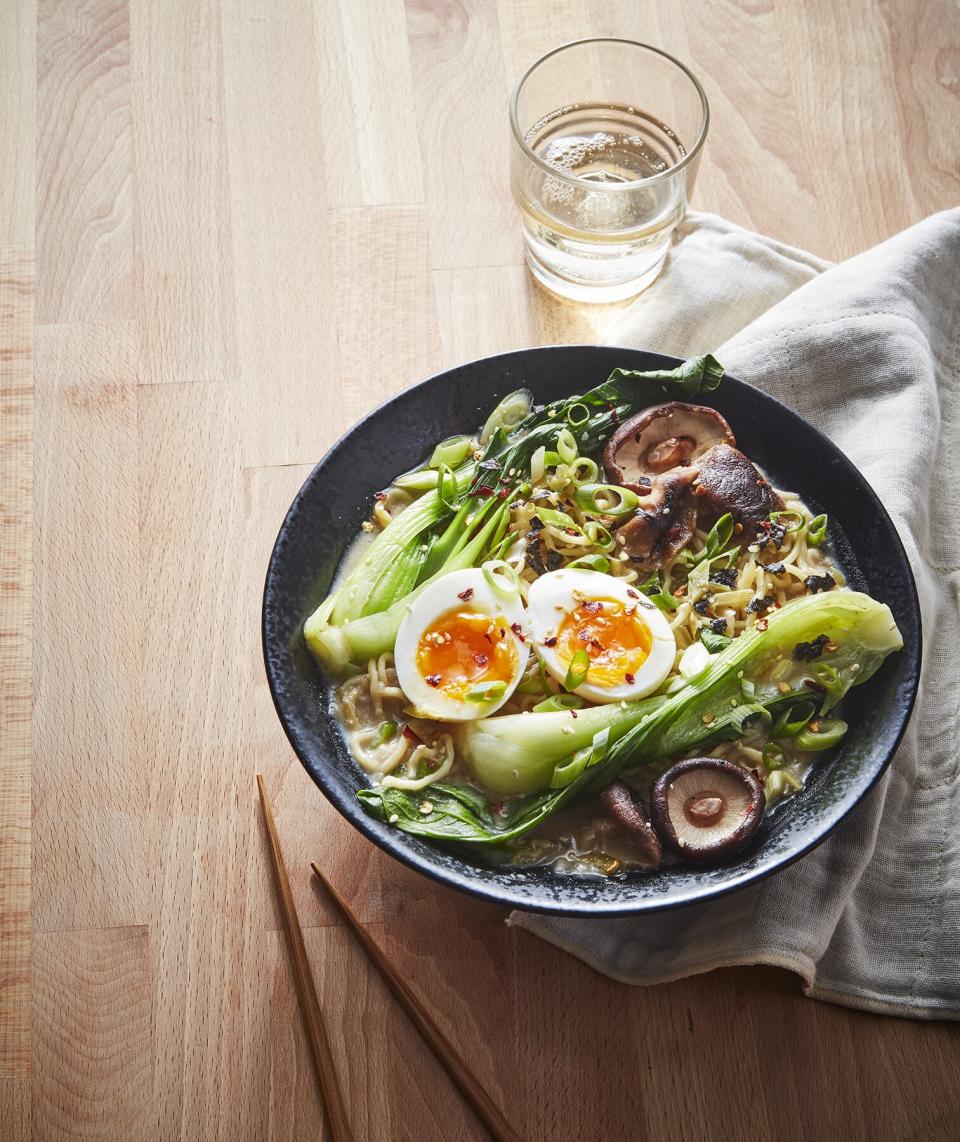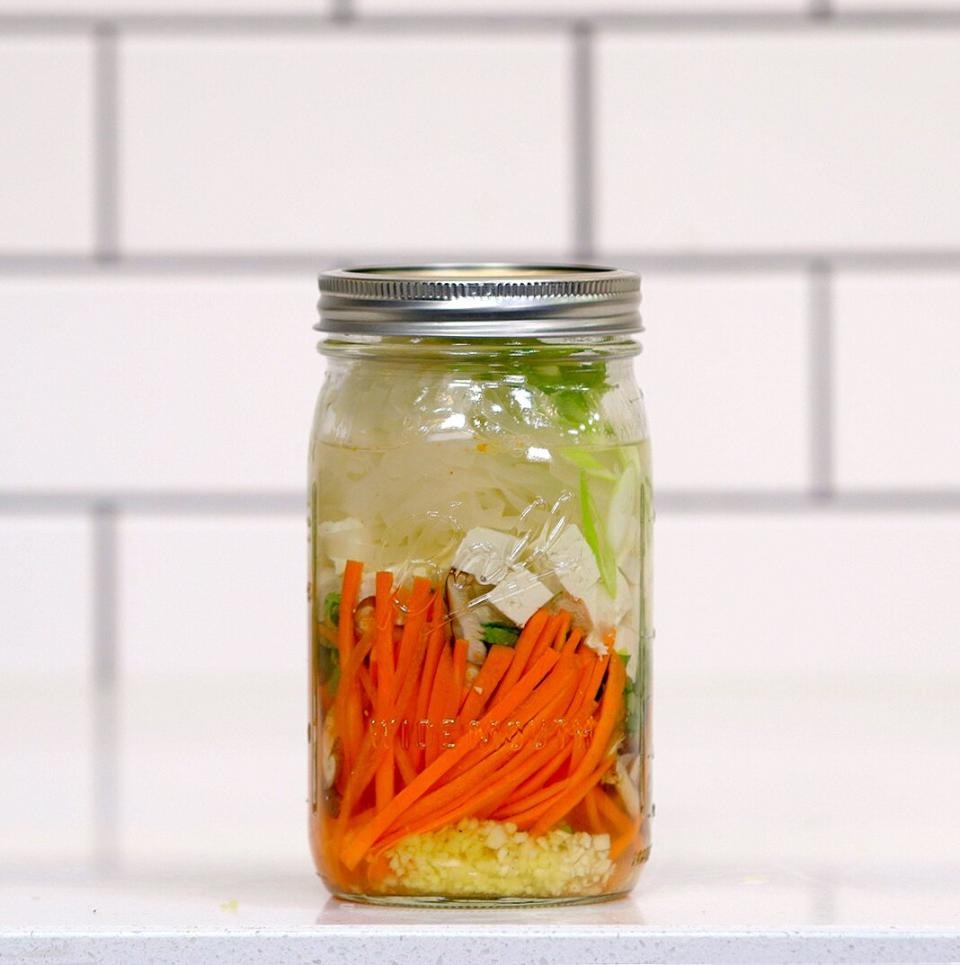How to Cook Ramen, According to Professional Chefs

Oatmeal Stories/Getty Images
TABLE OF CONTENTS
On This Page
Ramen Topping Ideas
How to Make Ramen Better at Home
Ramen Recipes
Ramen is like a hug in a bowl. It's incredibly satisfying, flavorful, and comforting, and the variations are basically infinite. We are not talking about the instant ramen packets popular in dorm rooms. We are talking about the rich and complex bowl of broth and noodles. Ramen is a soup, more specifically, a broth-based soup bursting with wheat noodles, meat and/or vegetables, and a variety of toppings. Ramen is a major part of Japanese culture, although it is presumed to have originated in China. Luckily for us, ramen has now become widely popular beyond Japan. There are many different types of ramen, and the regional variations are vast. From the broth to the toppings, its components vary widely. And to throw a curveball into the mix, some ramen dishes, like mazemen, are broth-less and simply tossed in a rich sauce, or tsukemen, which are cold noodles served with a dipping sauce or broth alongside for dunking.
When it comes to the prevalent broth-based variety, ramen broth can be made from vegetables, chicken, pork, beef, or a mixture of pork, chicken, and beef. It can even be a fish-based broth or made with bonito flakes—pink flakes of dried tuna. Traditionally, it can take hours and even days for ramen broth to be ready. According to Aaron Israel and Sawako Okochi, the authors of the upcoming cookbook, Love Japan (May 2023; Ten Speed), and the chef-owners of Shalom Japan in Brooklyn, N.Y., there is no wrong answer to what ramen broth can be. What helps to further differentiate the broth base is how the broth is seasoned and how the salt is delivered to the broth, which is called tare. Israel and Okochi break it down further with some examples of the main types of broth seasoning: shio which is salt, shoyu for soy sauce, which welcomes a dark soybean flavor to the broth, and miso, which adds a rich umami flavor.
Beyond the broth, there's (of course) the chewy wheat-based noodles—thin, wavy, straight, or thick. Not too long ago, if you wanted to make ramen at home, you had to rely on dried noodles, but fresh and frozen ramen noodles have become more accessible and are now available at supermarkets and Asian food stores. Sun Noodle is one of the brands most commonly found at grocery stores, among some other smaller brands.
RELATED: 6 Delicious Soba Noodle Recipes
What's certain is that it cannot be ramen without the noodles. (Fun fact: "men" means noodles.) However, there's more to ramen than some scrumptious broth and comforting carbs.
Ramen Topping Ideas
The finishing touch in a bowl of ramen is the toppings, and the possibilities are deliciously endless. Some popular ramen components include:
Chashu pork: braised or roasted pork belly or loin served thinly sliced on top of the broth and noodles.
Soft-boiled egg: a half or an entire egg with a runny or jammy yolk, sometimes the egg is marinated in a soy sauce mixture.
Scallions: chopped or sliced and sprinkled on top for a refreshing kick.
Nori: a thin, dried sheet of seaweed in the shape of a small rectangle tucked into the broth to dip in, or shredded and used as a garnish.
Fish cake: the eye-catching pink and white topping made of fish paste called kamaboko. It's also often seen as a thin slice in the shape of a circle with scalloped edges and a pink swirl in the center. This style of fish cake is more specifically called narutomaki.
Bean sprouts: blanched or stir-fried and used as a garnish.
Bamboo shoots: menma is a dried, fermented, and seasoned condiment about 2 to 3 inches long and 1/2-inch wide, often used as a garnish.
Bok choy: cooked and often halved or quartered through the stem and served on top.
Mushrooms: shiitake, wood ear, or enoki mushrooms are some of the most commonly seen in ramen bowls.
RELATED: 9 Mouthwatering, Easy-to-Make Mushroom Recipes
How to Make Ramen Better at Home
Ready to make delicious ramen at home? Chefs Israel and Okochi offer their most important tips and pointers when it comes to making, serving, and eating ramen.
Know Your Noodles
A good rule of thumb when it comes to picking out which noodles to buy is to think of the noodles as a vehicle for the broth. The thicker the noodle, the heavier (or more clingy) the broth. For a broth that's very rich and heavy, you want less of the broth in each bite, so a thicker noodle is best, as it just coats the exterior and more broth will slide off. The thinner and wavier the noodle, the lighter the broth. The rationale is that the thinner and wavier the noodle is, it's going to carry more of the broth in each bite. Thin noodles are great for a chicken-based broth, for example. Go a little thicker as the broth gets heavier. However, here's a good reminder: If you like a thicker noodle, then get it, that's fine too!
Wait to Cook Your Noodles
When cooking fresh noodles, wait to cook them until you're really ready to serve and eat. If cooked noodles sit in the broth for too long they will overcook and absorb the broth, leaving bowls with less broth. Always cook fresh noodles separately in boiling water for a minute or two, then add them to the broth. Ramen noodles are made with certain ingredients, like sodium carbonate, which is partly responsible for the springy, chewy texture of noodles, and you don't want it altering the clarity of the broth. In other words, this is not a shortcut to take.
Build Your Broth
Using vegetable broth for ramen will yield a light broth overall. Add some miso for a burst of umami. Take it a step further and add a piece of dried kombu—a type of kelp—for even more flavor.
Serve Like a Pro
Have everyone ready to eat, every topping chopped, and everything ready to go at once. Get the water boiling for the noodles, and have the broth piping hot. Add noodles to the boiling water and give them a stir so they don't clump together. While the noodles are cooking, add the hot broth to the serving bowls. Drain the noodles, no need to rinse, and add to each bowl of broth. Stir the noodles to avoid clumping here, too. Eat right away.
Don't Forget the Egg
For the perfect jammy, soft-boiled egg to serve with ramen, drop large eggs into boiling water and cook for six minutes, then rinse in cold water to stop the cooking. Or opt for ramen eggs, which are delicious marinated eggs. Simply bring equal parts soy sauce, sugar, and mirin to a boil and cool. Peel the cooked eggs and add them to the sweet soy sauce mixture. Set aside to marinate for at least 15 minutes and up to three hours. The white will darken and the yolk will naturally get a little gummy and less runny as the marinade pulls moisture from it.
RELATED: 8 Mistakes You're Making When Handling and Storing Eggs
Add Vinegar to the Broth
Just a dash of the pantry staple will balance out richness and fattiness. Serve ramen bowls with rice wine vinegar or black vinegar on the side, and everyone can add some to their own bowl depending on preference.
Go for Garlic Chili Oil
Serve ramen with garlic chili oil to lightly drizzle on top. The toasted garlic and sesame flavor, plus its spiciness, work great with broth. S&B Crunchy Garlic with Chili Oil is a favorite.
Slurp Away!
Bonus ramen tip: Slurp when you eat it! Slurping ramen isn't just satisfying, it's actually customary and encouraged by the pros.
Ramen Recipes
Now that you're equipped with top-notch pointers, it's time to try these simple, tasty ramen recipes.
Make-It-Yourself Ramen
Scallions, ginger, and garlic flavor this veggie-based ramen broth while a couple of spoonfuls of miso bring umami to this flavorful recipe. Seasoned with soy sauce or tamari, this ramen falls under the shoyu category. Six-minute jammy eggs, mushrooms, bok choy, and nori, makes this bowl of broth and noodles ultra-satisfying.

Pork Ramen Soup
This weeknight-friendly ramen calls for boneless pork chops for a speedy dinner. The drippings from browning the pork chops flavor the soy sauce-spiked chicken broth along with scallions and ginger. Feel free to swap the dry ramen noodles for fresh noodles, just remember to cook the fresh noodles in a separate pot of boiling water.

Ginger Meatball Ramen With Greens and Scallions
Flavorful pork meatballs seasoned with fresh ginger, scallions, and soy sauce take this bowl of ramen to another level. Meatballs aren't traditional in ramen but these juicy ones work perfectly with the chewy noodles and the miso-soy sauce spiked broth. Cook the noodles separately if you're using fresh ones.

Peanut Butter Ramen
Remember that bit about broth-less ramen? This is one to try, especially in warmer months. A rich and spicy peanut butter sauce seasoned with soy sauce and sesame oil coats noodles for a flavor-packed meal. Go for fresh ramen noodles to make this recipe even more delicious.

Mason Jar Miso Ramen Soup
This miso ramen-inspired soup in a jar is perfect for lunches in a snap. Prep the jars a couple of days in advance and then all you need is boiling water come lunchtime and about eight minutes to make it come to life. Note that this recipe calls for rice noodles which just need to soak in hot water to soften.


 Yahoo Movies
Yahoo Movies 